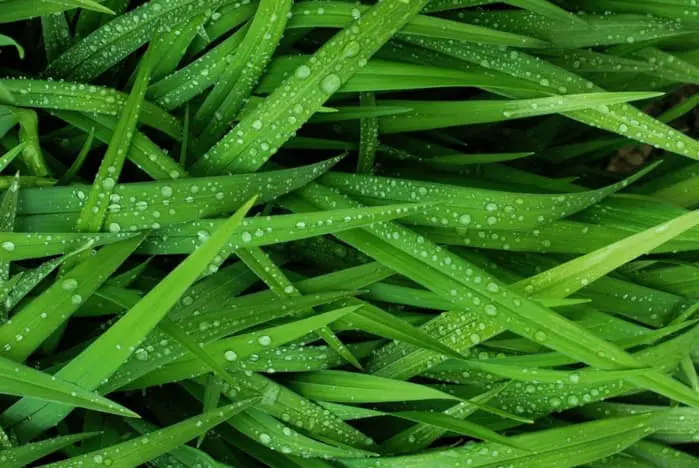Like shaving, the television trope of a father teaching a son how to mow a lawn is a thing of fiction. The truth is, lawn maintenance is the kind of thing that jumps out at a homeowner before they even know it. Suddenly, man or woman, you’ll find yourself the proud owner of a new home, and with that, the owner of a new lawn that’ll go wild much sooner than you’d expect.
The first thing you do is head over to the nearest hardware store. You may balk at the prices of lawnmowers—do you splurge on the $500 Honda or get that $50 electric push mower? Whatever your choice, your technique is just as important as the tool you’re using. With this guide, you’ll have a better understanding of the fundamentals of keeping a healthy lawn.
Should You Bag Your Grass Clippings When You Mow?

What do you do with the grass clippings collected after you’ve finished mowing your lawn? You see many people bag them for disposal. Yet, sometimes you see lawns that simply let the clipping fall where they may.
Truthfully, bagging grass clipping after lawn mowing is horrible for the environment. All that bagged grass will be carted away to a landfill. You might think that grass, being what it is, will quickly turn to compost in a landfill. The opposite is true. Because your grass is compacted and placed in a bag, it’s being exposed to an anaerobic environment (an environment devoid of oxygen). This means that very little, if any, decomposition will occur.
Instead, leave your clipping on your lawn. The clippings will decompose in a day or two and will follow the natural course of decomposition. Give it just one day and you’ll more than likely not even notice the clipping. Two days and they’ll be gone forever. Just make sure you mow regularly enough that you aren’t leaving mounds of grass behind.
If it has been a while since you last mowed and you notice that you are leaving big piles of grass clipping, be sure to go over them multiple times. The smaller the clipping, the more quickly it will decompose.
Additionally, make sure your mower blades are sharp. Sharper blades result in finer grass clippings.
What is the Best Lawn Height?
Lawn height is dictated by the seasons. The lawn height that works for Spring may not be ideal for Summer and Fall.
Cutting Grass in Fall, Winter, & Spring
In cooler weather, you’re better off waiting for your grass to reach an optimal height when deciding when to cut the grass. A good rule of thumb is to wait for your grass to grow to 3-inches high in the spring and mow it down by about one-third of its height. In this case, one-third is an inch, so you’d be mowing your grass from 3-inches down to 2-inches.
Mowing in Summer
Summer has its own distinction because of the excessive heat during this time. Rather than cutting your grass when it reaches a cutting height of 3-inches, wait for it to grow a half an inch more to 3.5-inches tall. From there, cut it down by one third to a little over 2.5-inches. A taller lawn means more insulation from the harsh sun, so in summer it’s important to let your grass grow a little taller.
Does Mowing Kill Weeds?
Mowing can help mitigate weed growth when it’s done correctly. A healthy lawn with healthy mowing allows your grass to proliferate, competing and edging out weed growth. To make your grass healthy and dense ensure you only cut it back by one-third of its height. With that said, ensure you’re mowing weekly to keep weeds down.
While it’s not typically recommended to bag your grass, you may want to consider attaching a bag if your lawn is already riddled with weeds. A lawn mower can throw around weed seeds, making the problem worse. If your lawn is full of weeds already, then bag your clipping and spread them in a thin layer in a compostable space so they can decompose.
When Should You Cut Your Grass?
With your lawn, timing is everything. Knowing when to cut your grass is one of the primary components of a healthy lawn.

Mow Before or After Watering?
Your grass isn’t going to care whether it’s watered before or right after you mow. However, wet grass clumps together, creating a problem for your lawnmowers, which will almost certainly choke on the mass of wet grass. Beyond that, clumps of wet clippings are much harder to decompose. So while it might not matter to your grass, we think it is easier to water after you mow.
Mow Before or After Spraying Weed and Feed?
When you apply weed and feed to your lawn (a combination of weed killer and grass fertilizer) you should consider your lawn to be untouchable for a few days. These products put stress on the grass, so you want to make sure that the lawn is healthy before you apply. Waiting a few days after application ensures that the product has had time to absorb into your lawn where it can do its job.
Mowing Before Winter?
You should definitely mow before the onset of winter. If your grass is too long you run the risk of it developing a fungal infection under the wet, protective blanket of snow. When the temperature consistently drops below 50 degrees you should start the first of three mows. Try and time your third and final mow a day or two before the first hard frost. If you time it right, your grass will be short, healthy, and ready to hibernate by the first snowfall.
Grass Likes Attention but Not Too Much
The moral of the story is that, whatever the season, your lawn demands attention but doesn’t want too much. Cut it regularly but not too low and watch the weather, especially around wintertime.
Anyway, you can always turn to professionals when it comes to lawn maintenance. We at Earth Development can help you make your home territory look good with all types of individualized solutions for landscape renovation, lawn maintenance, and more. Contact us now!
